Applications of First Law of Thermodynamics
Applications of First Law of Thermodynamics: Overview
This topic covers concepts, such as, Work Done in Reversible Adiabatic Process, Work Done in An Isothermal Expansion For Ideal System, Interpretation of Work from Graph of Cyclic Processes & Reversible Polytropic Process etc.
Important Questions on Applications of First Law of Thermodynamics
The work done during the expansion of a gas from a volume of against a constant external pressure of 3 atm is (1 L atm = 101.32 J):
In a container of oxygen gas is kept at and . The gas is allowed to expand isothermally against constant external pressure of till the final pressure reaches to . Calculate the magnitude of work done by the gas.(The nearest integer)
moles of a diatomic gas at is heated at constant pressure, so that the volume is doubled. If , the work done by gas in will be
moles of an ideal gas expands isothermally against a constant pressure of Pascal from L.The amount of work involved is
of an ideal monoatomic gas undergoes adiabatic expansion from against a constant external pressure of .
One mole of an ideal gas is taken from and along two paths denoted by the solid and the dashed lines as shown in the graph below. If the work done along the solid line path is and that along the dotted line path is then the integer closest to the ratio is:
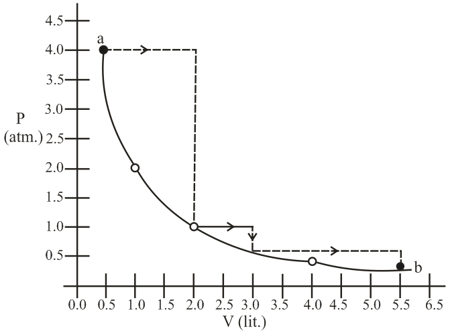
Two moles of gas are initially at temp and occupy a volume of litres. The gas is first expanded at constant pressure until its volume is doubled. Then it undergoes reversible adiabatic change, until the volume become , then predict the value of (where is the final temperature, )
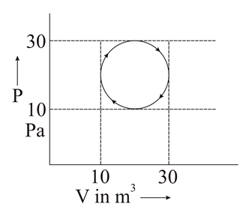
Select the incorrect statement about the above diagram.
An ideal gas undergoes adiabatic expansion against constant external pressure. Which of the following is incorrect:
Calculate (in magnitude) for the process, one mole of an ideal gas at is expanded isothermally and reversibly at to a volume of .
Give your answer as the nearest integer.
In the given graph, the area of circle and are unit and unit respectively, total work done ' ' unit.
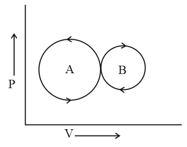
When a system is taken from state to along path , as shown in the figure, unit of heat flows into the system and the system does unit of work. If ' ' unit heat flows into the system along the path , and the work done by the system is unit?
Then the value of is
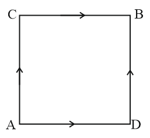
The enthalpy change of a reaction is independent of
and for the following process for a monoatomic gas are:
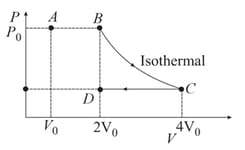
Consider the reversible isothermal expansion of an ideal gas in a closed system at two different temperatures and The correct graphical depiction of the dependence of work done on the final volume
A thermodynamic cycle in the pressure -volume plane is given below:
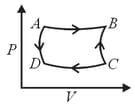
and are isothermal processes while and are adiabatic processes. The same cycle in the temperature - entropy plane is :
During the free expansion of an ideal gas in an isolated chamber,
A piston filled with of an ideal gas expands reversibly from to at a constant temperature of . As it does so, it absorbs of heat. The values of and for the process will be
() ()
One mole of an ideal gas (at ) is expanded from volume to at constant temperature. The value of work done (in ), if gas is expanded against vacuum ?
For next two question please follow the same
Work done by the system in isothermal reversible process is: . Also in case of adiabatic reversible process work done by the system is given by: . During expansion disorder increases and the increase in disorder is expressed in terms of change in entropy . Both entropy and enthalpy changes obtained for a process were taken as a measure of spontaneity of process but finally it was recommended that decrease in free energy is responsible for spontaneity and .
Which of the following statements are correct:
(1) The expansion work for a gas into vacuum is equal to zero.(2) 1 mole of a gas occupying 3 litre volume on expanding to 15 litre at constant pressure of 1 atm does expansion work 1.215 kJ.
(3) The maximum work done during expansion of 16 g at 300 K from to is
(4) The for is almost negligible in comparison to for .
(5) (At constant T)
For next two question please follow the same
A sample of an ideal gas is expanded to twice its original volume of 1 m3 in a reversible process for which and at constant volume.
The work done during the process may be
